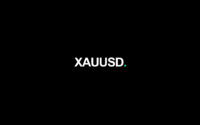IS A GLOBAL RECESSION INEVITABLE?
The Big Question is a regular feature in which Project Syndicate commentators concisely address a timely topic. In this Big Question, we ask Jeffrey Frankel, Anne O. Krueger, Jim O’Neill, and Stephen S. Roach how steep the world economic downturn is likely to be.
JEFFREY FRANKEL
No. A global recession is entirely avoidable. True, the odds of a downturn are much higher than usual in Europe, which has been hit hard by reduced supplies of Russian natural gas; China, where COVID-19 lockdowns already turned growth negative in the second quarter; and other countries, including emerging-market economies with debt troubles. Even the US economy is experiencing a slowdown. I still maintain that the two consecutive quarters of negative GDP growth reported by the Bureau of Economic Analysis do not signify that a US recession started in the first part of 2022. There are three reasons for this. First-quarter GDP will be revised on September 29, and second-quarter GDP on August25; other indicators like gross domestic income (GDI) and employment were positive; and the recession ruling is up to the National Bureau of Economic Research. But rising interest rates and the gloomy outlook among America’s trading partners do mean that a US recession is more likely than usual at some point over the next two years. But a “global recession”? The United States is not the only place where a negative growth rule is not an agreed criterion for defining recession. Consider global GDP. It has been rare in the postwar period for global growth to fall below zero even for a single quarter, let alone two. Not even the severe downturns of 1974 and 1981 qualified. Even in times of apparent recession, negative growth in advanced economies is usually outweighed by still-positive growth among emergingmarket and developing economies. (Two exceptions were the 2008 global financial crisis and the 2020 pandemicinduced recession.)
ANNE O. KRUEGER
When the COVID-19 pandemic began, people cut their spending. Although unemployment rose and supplies fell sharply due to pandemic containment measures, much of the potential income loss was offset by government policies. In the United States, it even paid to be unemployed. The result was that personal savings shot up. When COVID-related restrictions were later relaxed, demand increased rapidly. Supplychain disruptions, the time needed to restart production, and continuing worker shortages resulted in significantly slower supply responses. The Fed’s balancing act is difficult: Some, but not too much, dampening of demand is warranted. At the same time, inventories (increases in which partly reflected stockpiling during supply shortages and will inevitably be run down) are beginning to accumulate and retail sales are losing some momentum. Whether the Fed’s policy tightening will check demand growth just enough as supply increases will determine whether inflationary or recessionary pressures dominate in the US. If policymakers’ judgment is correct, the US could re-attain the Fed’s target inflation rate and satisfactory growth without falling into recession.
JIM O’NEILL
In contrast to the common practice in Western economies, a global recession is not really defined as two consecutive quarters of negative GDP growth, because in many large emerging economies, such as India, such conditions rarely arise. Even if many Western economies are experiencing back-to-back quarters of negative growth, we can end up with a “global” recession in which world GDP growth averages around 2%. Over the past 25 years, the US and China between them often have accounted for more than 80% of annual global GDP growth. So, if these two economies are both in their respective versions of recession, then that will virtually guarantee a global downturn. Given their current weaknesses and challenges, such a scenario is quite possible. But I am less convinced of this than I probably was a few months ago. That is because there is creeping evidence that the inflationary surge has – at least so far – been transitory, with commodity prices easing and measures of long-term inflation expectations quite stable. If this continues, central banks will become less hawkish and will not have to weaken their economies further to stabilize prices.
STEPHEN S. ROACH
Notwithstanding the pitfalls of forecasting anything these days, my cracked and worn crystal ball sees a global recession occurring in the next year. For me, recession risk assessment has always been a two-step process: the stallspeed alert and the impacts of inevitable shocks. Economies – whether of single countries or the world as a whole – approaching the stall speed lack the resilience to withstand the blow of shocks. For the global economy, the last five recessions have all occurred when world GDP growth fell below the 2.5% threshold. That represents a one-percentage-point shortfall from the post-1980 average of 3.5%. As such, when global growth falls into the 2.5% to 3.5% range, my rule is to sound a stall-speed alert. The lower half of that range, 2.5% to 3%, is especially ominous – a perfect predictor of global recession.
Source: project-syndicate.org
[ad_2]
Source link

